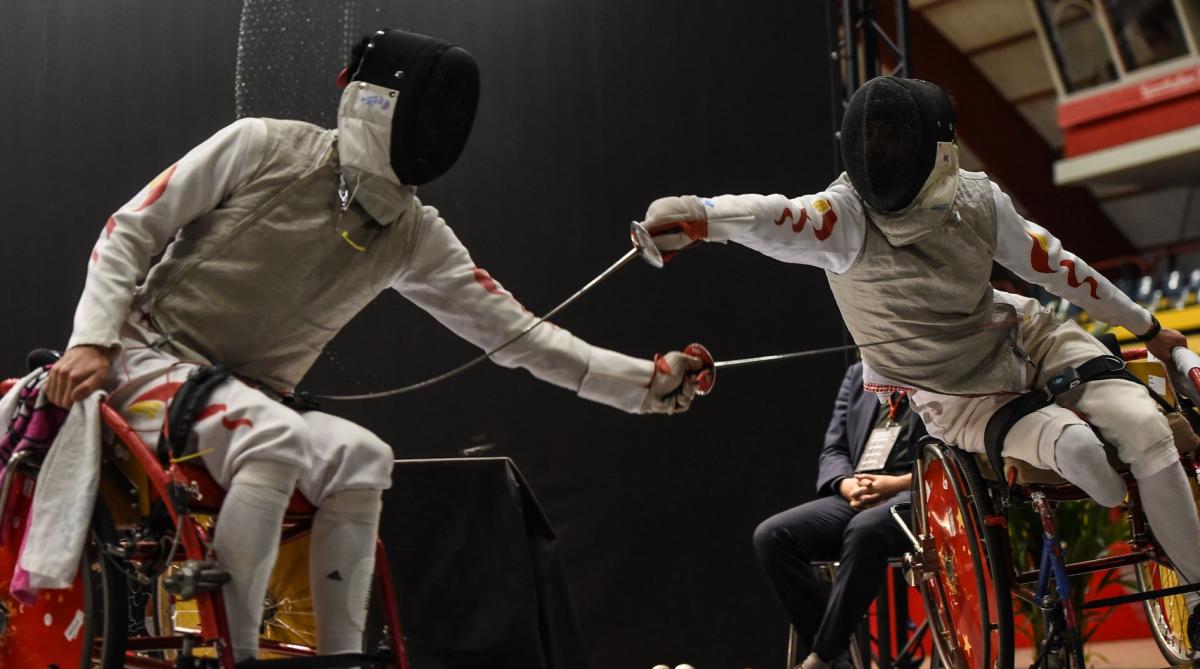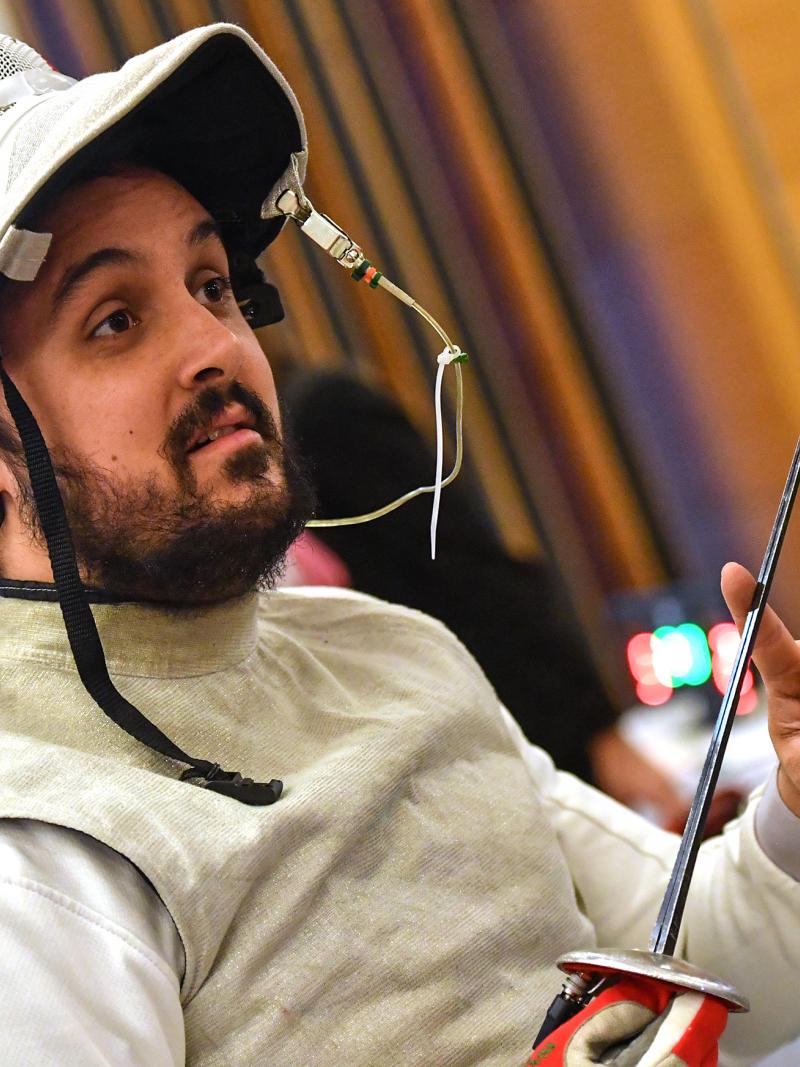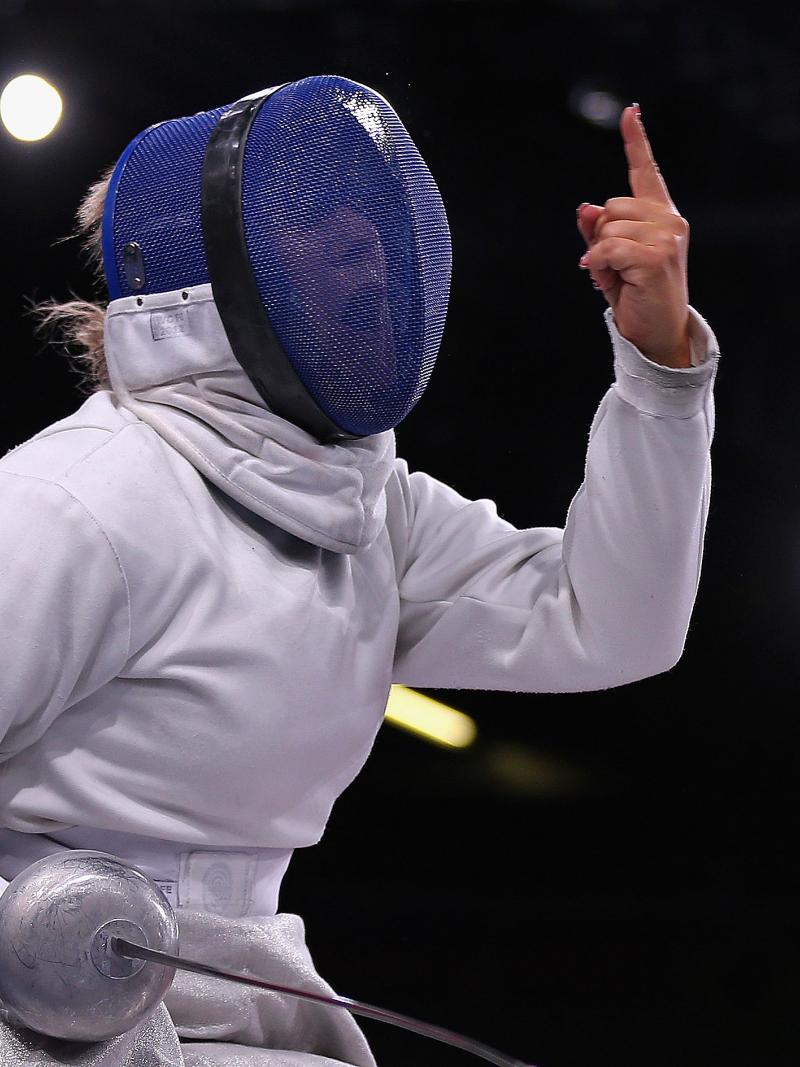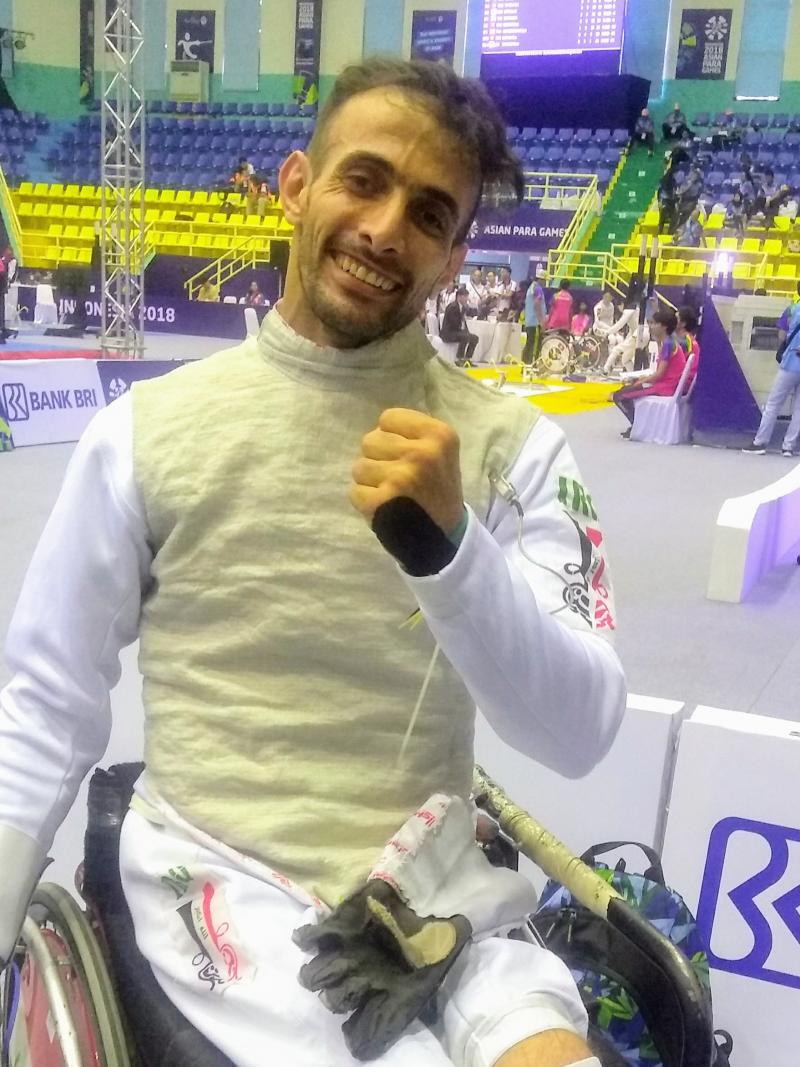Sport Week: Welcome to wheelchair fencing
Athletes battle on a “piste” and earn points when their weapon touches their opponent 29 Jun 2020
Wheelchair fencing was developed by the father of the Paralympic Movement Sir Ludwig Guttmann. Having featured at the International Stoke Mandeville Games in Great Britain in 1955, the sport was then on the programme at the very first Paralympics since 1960.
Fencing is the closest one can get to medieval combat. Two athletes battle on a 'piste' and win points when their weapon touches their opponent. In wheelchair fencing, competitors are firmly fixed to a metal frame in the piste.
Given the fast and furious nature of the sport, athletes are required to wear a protective mask, gloves and jacket at all times.
The fencers start with blades raised in the 'en garde' position. This position is held until the referee calls 'play' and the bout begins.
There are three weapons – epee, foil and sabre.
The epee is the heaviest weapon at 770g and is more rigid than the other swords. Points are scored by touching the tip of the blade on any part of the opponent’s body above the waist.
The foil is lighter and highly flexible. In the foil event, points are awarded for landing the tip of the blade on the opponent’s torso, but not the limbs or head.
The sabre has a short, flexible blade and differs from the other events in that points are scored by hitting the opponent with the cutting edge, the flat or the back of the blade.
Duration and scoring
An electronic scoring system registers when a hit has been successfully landed and the scoreboard updates accordingly.
In the early pool rounds, the winner is the first fencer to reach five points or the fencer with the highest score after a single bout of three minutes.
In the direct elimination rounds, the victor is the first to 15 points or whoever has the most points after three bouts of three minutes.
In team matches, teams are made up of three fencers. Each fencer faces each opponent in the other team in a single bout of three minutes. The winning team is the team with the most points when the time is up, or the first to reach a cumulative score of 45 points.
Classification
At the Paralympic Games, wheelchair fencers compete in two classifications:
• Class A athletes have good trunk control, allowing them to bend forward and sideways explosively when attacking their opponent or dodging an attack.
• Class B have an impairment that impacts their legs as well as their trunk or their fencing arm.
Key terms to know
The initial offensive move the fencer makes by extending the arm and continuously threatening the opponent’s target is known as the 'attack.' This precedes the launching of a lunge or 'fleche.'
A 'parry' is when a fencer blocks an opponent’s attack with his/her weapon.
The 'riposte' is a counter-offensive move made by the fencer who has parried the attack.

 Facebook
Facebook
 Instagram
Instagram
 Twitter
Twitter
 Youtube
Youtube
 TikTok
TikTok
 Newsletter Subscribe
Newsletter Subscribe




